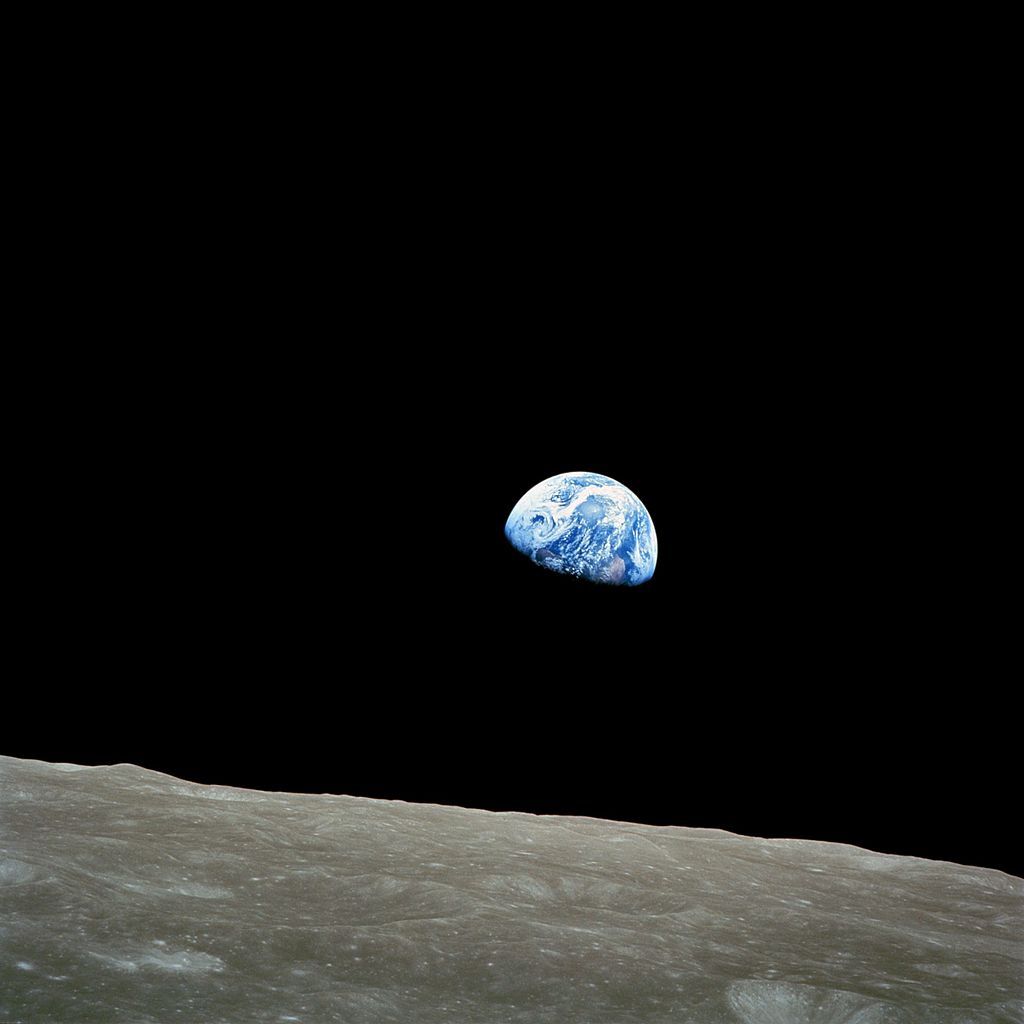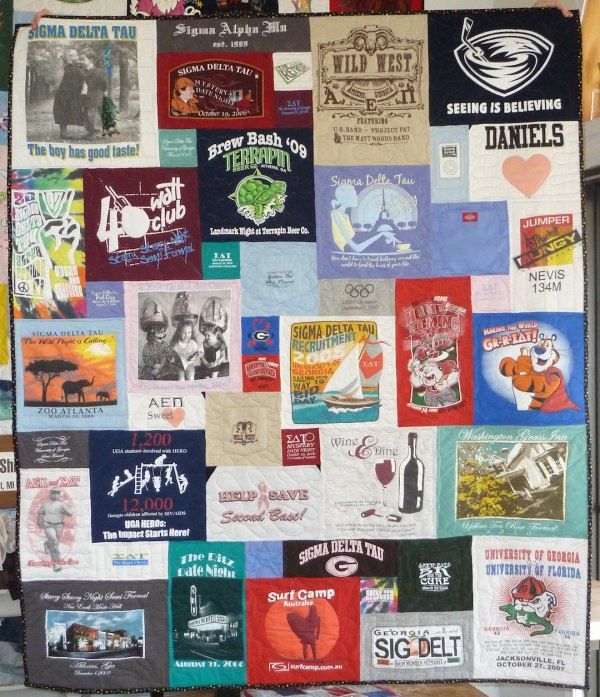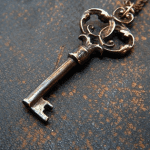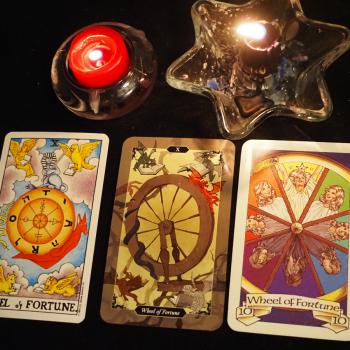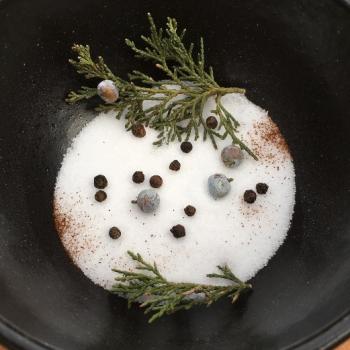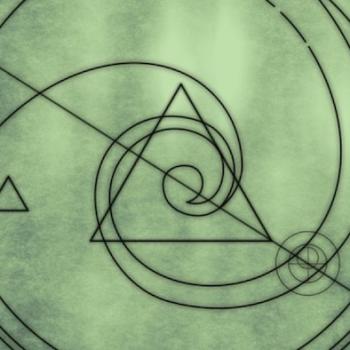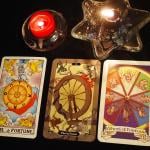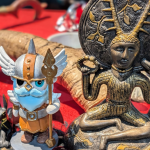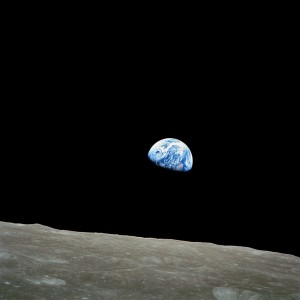
I’ve encountered Pagans who say, “the earthy Pagan stuff isn’t for me”. They’re not interested in having their practices have an earth focus. And as much as I respect each individual’s choice in deciding how they practice, you can’t separate yourself from the earth no matter how hard you try. To decide your practice is not concerned with the earth is selfish. You are saying that you are disregarding how your actions impact those you are interconnected with. Along the same line, I see people who say, “oh but I do care” who don’t see how they treat all their possessions as disposables or collect all the things and not realize how they are contributing to the problem. You can’t help but wonder if they actually do care. I’m not say these people don’t, but there remains a cultural barrier to creating a cultural shift for the better. The idea that we’re separate from the environment is so culturally entrenched, even those who are self-described environmentalists fall prey to this separation effect.
By taking a really close look at our thoughts, actions, and words we can see how this separation effect takes hold.
What Am I Thinking?
Whenever we contemplate an issue we often frame it in how it is in reference to ourselves. The language tools for that are in the pronouns “I/me”,”you”,”we/us”,”she/he”,”her/him”,”it”, and “they/them”. How we reference each other would go along like this,
“There is Jim, I can’t see the rest of them. Do you think they will hear us if we call to him? She isn’t in sight but you might still get caught. She has really good hearing and is very fast. ”
Now when we talk of wildlife it usually sounds like this,
“I am going to climb this tree to get a better view, it has sturdy branches. ”
“That is a huge bug! Lets move away from it.”
“Did you see that bird fly over us? It was so fast!”
“The salmon are migrating upstream. I went to watch them and saw a big one, it was moving quickly past all the others.”
We often use “it” or “that” just because we are unsure of their gender, but this wouldn’t be tolerated if you called a fellow human or even a known pet “it” or “that”. No matter their gender you don’t use “it” or call someone “that”.
e.g. “It was a big human that was running through the area. It looked like it was running for a marathon.” V.S. “There was this big guy that was running through the area. It looked like they were running for a marathon.”
“Our old human was cleaning its home, then it made a meal when it was done” V.S. “Grandma was cleaning her home, then she made a meal when she was done.”
“The dog had been leaving its bowl full, then we found out why. It had discovered how to get into the fridge.” V.S. “Our dog had been leaving his bowl full, then we found out why. He had discovered how to get into the fridge.”
We don’t use ‘it’ because that is considered too impersonal, and is seen to be demeaning them to the status of a mere object, something that can be owned and exploited. It means ‘it’ doesn’t matter. The use of ‘it’ increases with the degree to which the speaker views an object of speech as impersonal. Sometimes being used to intentionally emotionally distance ourselves from ‘it’. For babies and other animals, once gender is known it is automatically used in place of it. For those familiar to us it is considered immensely rude to not to use the preferred pronoun once it is known.
An effect of the use of ‘it’ is perceiving things of nature as something to possess, conquer, or tame. “Taming the wild beast.” “Conquer the mountain.” Or, “staking claim of this land.” The objectification of the natural world allows us to believe that our species is somehow more deserving of what comes of the world than over 8.7 million species we share the planet with. Using “it” convinces us that we have no moral responsibility and can exploit the world at will.

Another aspect of the separate effect in thoughts is how we use the word “animals”. When used as a descriptive word it is derogatory, “He is such an animal!” Everywhere else it is used it is to reference non-human animals, such as “animal pictures” – we don’t expect humans when this is looked up, unless it is derogatory or behaving like a non-human animal. As a society we keep talking as if humans are not animals. Ignoring the fact that we are part of the animal kingdom. We have to overcome speaking as if we are not a member of the animal kingdom and start talking of other animals as beings worthy of respect if we are going to give them any respect at all.
In many indigenous cultures other lifeforms and even inanimate forms are referred to as persons, a relation, brother or sister, aunt or uncle, grandmother or grandfather. And many indigenous languages never refer to these relations as an object. Something that we can learn from. This is not to say that indigenous peoples have all the answers, though I believe they have many. There often are oversimplifications of the complexity of creatures different from us via symbolisms, and attempts to take spiritual meanings from our encounters with them. This disregards their self interests, reduces the unique characteristics of the individual and the overall complexity of the kind of animal they are down to a stereotype which is likely something that isn’t even true. This is common in all cultures where we project our ideas of what we want something to be onto them and convince ourselves that it is true. Being wary of this idealized projecting will help in creating better relationships with other living beings.
One person who decided to tackle this pronoun problem through indigenous language was
Through the help of fluent speaker and spiritual teacher Stewart King, Robin learned that the proper Anishinaabe word for beings of the living Earth is Bemaadiziiaaki. Recognizing that this word wouldn’t so easily replace “it” in the English language, Robin decided to use a piece of the word at the end that means ‘land’ – “ki” – to signify the living earth. “Ki” being used in place of “he/she”. And using the word “kin” like how “him/her” is used and when referring to a kind of animal such as “beaver kin”.
“I am going to climb this tree kin to get a better view, ki has sturdy branches. ”
“Ki is a huge bug! Lets move away from kin.”
“Did you see that bird kin fly over us? ki was so fast!”
“The salmon kin are migrating upstream. I went to watch them and saw a big one, ki was moving quickly past all the others.”
This can help overcome the first part of the Separation Effect – phrasing and thus seeing other lifeforms as objects. By speaking of our fellow beings as the fellow beings they are.
What Am I Doing?
In day to day life we tend to bring our concerns down to immediate needs and desires. Hunger/Thirst, Shelter, Companionship, Health, Comfort, Status, Aesthetics etc. So we often don’t think of all the interconnections of our actions when we strive to satisfy those needs and desires. But that is what makes our decisions ever so important. Every decision that every human being makes has an impact on our environment. Strumming the strings that interconnect us to all other things, living and non-living in our little corner of the cosmos we call Earth. That is why its called an Ecosystem – living beings interacting with each other and the environment they depend on.
Because of our cultural thinking that has us believe we are separate from the rest of Nature, we act like it whole scale. We say things like, “Lets get out into Nature.” Forgetting that we are already in Nature – All. The. Time. Your home? Made with lumber from a forest, minerals from a mine, and petroleum products from Oil wells and mining. Your clothes? Fibers from sheep farms, cotton fields, silkworm farms, and petroleum oil fields. Your electronic devices? Are minerals from mines, and petroleum from oil fields. Your food? Grown in farms, usually monoculture fields or feedlot factory farms, and often with overworked and underpaid workers to keep it cheap. In fact, most of where we source our resources have poor working conditions and worker rights all throughout the system. Not to mention seriously lax industrial regulations that permit pollution. So look around. Ask the important questions of where your things come from, how they became what they became, how it got to you, and what happens when you are done with it. That is how to combat the second part of the Separation Effect – having no sense of connection to something until the point of when you obtain it, believing that it has had no history until you start making your own memories with it.
The History Behind ‘It’
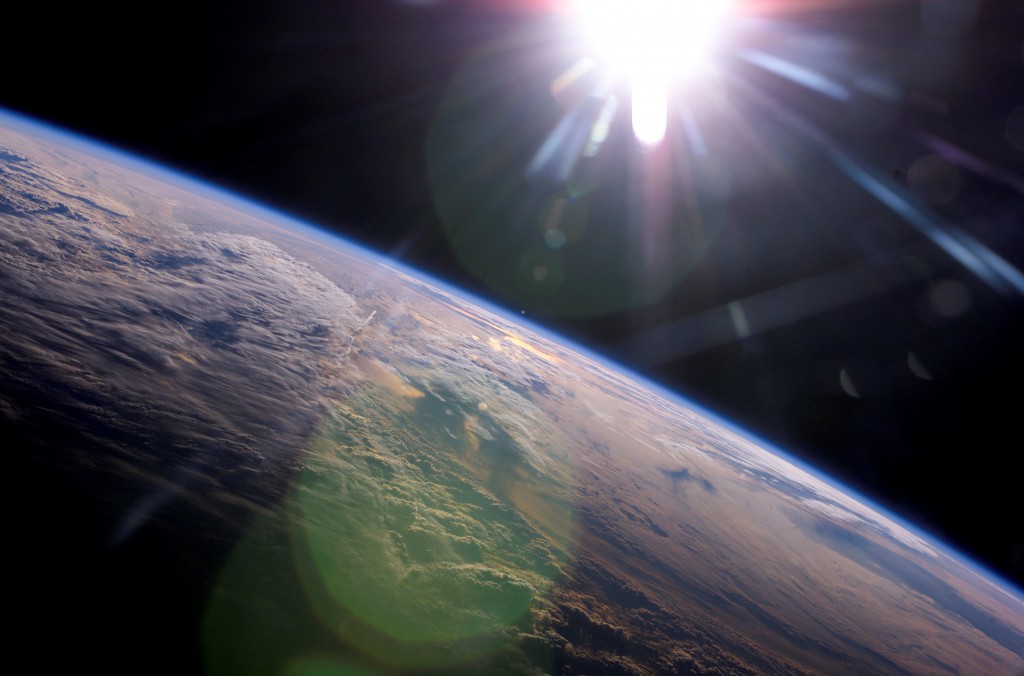
There is always a history to everything, even before it was the raw material that was harvested. From the very first plants that drew nutrients to itself from its surroundings and harvested the energy of the sun, over many generations changing and adapting to its environment, colonizing the oceans then the rest of the earth’s surface on land in the Ordovician Era over 465 Million years ago; Organisms developing alongside and consuming plants and each other, themselves adapting and changing over many generations in response to their own ever changing environment;

Petroleum being ancient plants and animals that were unable to decompose once they died because the organisms that did that weren’t existent yet during the Carboniferous Era ~358 million years ago. And so became buried and compressed under millions of years worth of debris; Minerals being from the remnants of an ancient exploded star coalescing into a planet that itself collided with a smaller planet to form the earth and moon in the Hadean Era 4.5 Billion years ago. Since its formation having contributions from meteors striking the planet, along with the tectonic churning of earth’s crust combining with what life had produced on its surface. All this had happened before becoming heavily utilized by humans over many generations to today. Cultivating these plants and other animals in a way so that they meet our desired production, later mining minerals, coal and oil. First for heat, then metallurgy, then power. Over many generations these resources were harvested and altered in increasingly refined ways, to now where we still have them manipulated and transported by many hands to reach the form and place it has. Everything you interact with very much has a history before you even had your first breath.
This item with its history of which itself in its journey to that first moment you have it could have impacted so many lives in your own life time. Your choice in supporting for it to exist has in itself supported the process that brought it to you. Any and all impacts, from deforestation, erosion, habitat loss, and pushing indigenous peoples from their lands for access to resources; To forced or impoverish labor, pollution as an industrial byproduct in its cultivation and manufacture, further deforestation, habitat loss and pollution to build roads and for transportation of the product out to the businesses that themselves repeat deforestation and habitat loss to sell them in a shop with underpaid staff. All this and more is potentially supported by your purchase of this product. I think that such a decision shouldn’t be taken so lightly.

Your choices can support ill or good in the world, even with the purchase of a product, but especially if there are many people who do so as well. So I encourage people to openly discuss these questions so that a momentum for and of better interconnections can be made.
“It’s” Future
Even if you made the conscientious choice in obtaining a product, there is also the matter of what happens after you are done with it – including when you yourself disperse. Everything you possess is your responsibility, but many feel that responsibility ends the moment they let go of it when they are done with it – be it in the trash or on the streets. The fact that our streets are so littered should offend. Why? Because its one of the most blatantly inconsiderate thing a person can do. You’re making your responsibility someone else’s problem to deal with and maybe even continue to be your problem if no one decides to cover for you. In essence you are trashing our home. You wouldn’t expect someone to walk into your home and leave their trash there would you? Then there is no justification for leaving your trash in our shared space. The least that can be done is act the responsible person you are perfectly capable of being, not a toddler – and some toddlers act better. The other thing is the notion that all your no longer desired items are now nothing more than trash in itself is flawed.
All “trash” is in actuality “by-products”. Just like how the manufacturing process that made it had by-products that can pollute or be remade into something useable. Like how petroleum industries invented plastic bags that was until then a useless by-product in the process – but lets just keep that stuff in the ground because it all doesn’t end well. And that is the point of considering the future of the things we are done with. Just because you are done with it doesn’t mean it won’t still impact you or others. All things have to go somewhere, they don’t just disappear. This is the third part of the Separation Effect. The belief that the moment it leaves your hand when you are ‘done with it’ makes it no longer your responsibility and no longer have connections to it. The reality is that its end impacts are directly because of you with no one else to blame for it.
When making the decision to bring something into your life you have to also consider the outcome when its no longer being used by you and influences others. Unless a conscientious decision is made from the beginning, it can be very difficult to make a choice that isn’t causing negative impacts later on. If all its materials are made from biological components (plant or animal) then it can easily become reiterated into the ecosystem via compost – a by-product that can be reused in gardening. If all its materials are made from metallurgical minerals then it can reduce the demand for mining more by having it remade (recycled) into another metal object or as a metal component. Otherwise it will either be buried again over geologic time, or rust away.

The location of where this happens can have lingering effects to the life around it, so its best to avoid toxic metals to being with, then keep it going via recycling for as long as possible, then ensuring it is deposited harmlessly into the environment when it can no longer be beneficial. If it is made with petroleum, then the only by-product option is to perpetuate it for as long as possible, including recycling but only if nothing else can be done with it. This is because plastic doesn’t rot or rust away. All the while many of these plastics leech its components into our food and air, capable of quickly reaching levels that negatively influence our biology in multiple ways. Be it changing our hormones, causing birth defects, asthma, allergies, and cancer.

No matter what you do with plastic it lasts for hundreds of years and can choke out a lot of organisms in the process – deteriorating the soil ecosystems which we depend on for the well being of the plants that provide food, shelter, medicine and air; and are disrupting the aquatic ecosystems by shading out the oceanic vegetation that the rest of ocean food chain depends on and becoming consumed by creatures directly thinking it a source of food, poisoning and killing them in the process. Even if you are inland your petroleum based product can break apart so small that is not easily seen by the eye. From there it can become washed into the watersheds and move through the river systems until it reaches the ocean. More easily so when you use it with water, like micro-plastic beads in facial washes and toothpaste, or when you do laundry with petroleum products – a prime example being fleece. As when you wash with these petroleum based products it drains that petroleum particulate directly into the water system. So its not just the coast line populations contributing – everyone is.

When it comes to objects that combine metal and plastic and you decide to recycle it, it usually goes somewhere where health and safety regulations are lax, and then the plastic is burned in the open air to get to the metals – poisoning the workers, their community, and the ecosystem we all share. This is a common outcome for electronics, especially computer devices (link also shows how you can establish beneficial connections with your electronics).
The best choice is to have it made from biological sources because it has the least detrimental impacts on the ecosystem from source to end. The next best thing is reusable metals, it has more of a detrimental impact on the ecosystem but if its use is prolonged and at the end recycled, then there is less demand for mining and thus less impacts overall. Refuse plastic and other petroleum based products because they are severely detrimental from beginning to end – the leading cause to global warming and its plastic by-products will continue to negatively impact generations far into the future. Your influence doesn’t end the moment you decide you are done with it, so take the time to make sure that choice is a good one.
A Call For Change

If you, like me, want to be part of a cultural shift toward a future that has its interconnections beneficial to our ecosystem, then I invite you to add your name to A Pagan Community Statement on the Environment officially open to signing today on Earth Day.
For more information on how to establish positive connections within our ecosystem, explore this blog by clicking through the information in the tabs provided, clicking through the categories and tags at the bottom of articles of interest, and use the search bar at the side of this page for specific topics.

